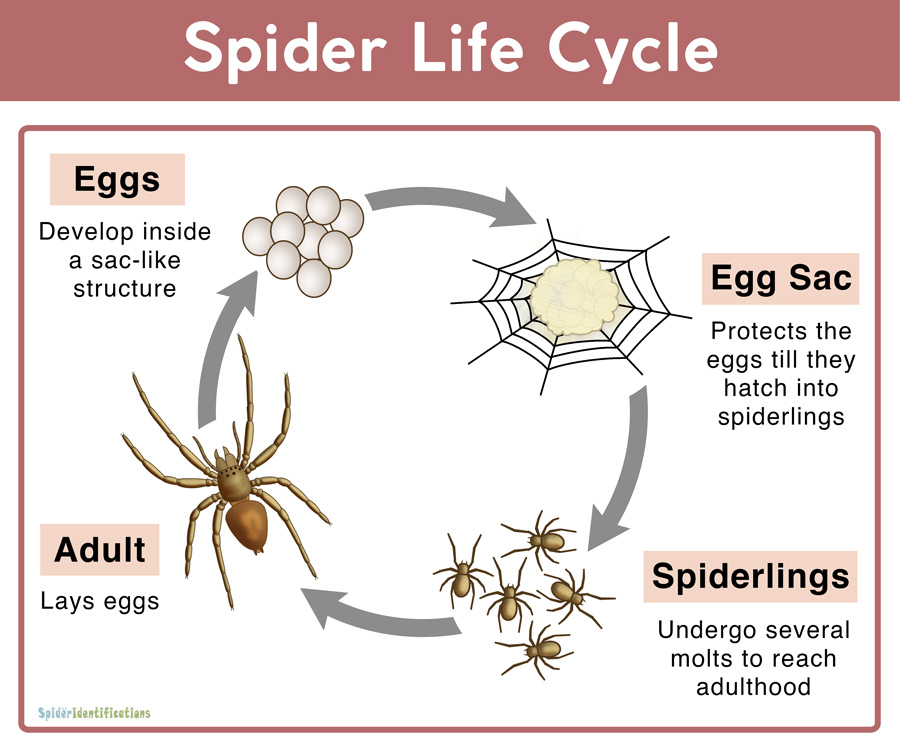The sequence of biological changes and developments that a spider undergoes all through its life, starting as an egg and finally reaching its adulthood, is called its life cycle.

All spider species, ranging from the smallest jumping spiders to the giant huntsman spiders, mature in four different stages – egg, egg sac, spiderling, and adult.
First Stage: Egg
After mating, the females store spermatophores until they are all set to lay eggs. The number of eggs laid varies by the spider species, ranging from a few eggs to hundreds and thousands of eggs. These eggs are usually wrapped with an egg sac constructed from silk.
Second Stage: Egg Sac
The egg sac, made for protecting the eggs from the elements and against predators such as birds and ants, is the place where the offspring develop. The eggs start hatching in a few weeks. Some spiders carry the sac until the eggs hatch while others leave it in a secure location, such as a burrow, under bark, or hidden among leaves or foliage.
Third Stage: Spiderlings
The spiderlings are the immature spiders that bear a great resemblance to their parents. After coming out from the egg sac, the spiderlings immediately disperse by either walking or ballooning. As they develop, these young spiders molt several times, and they remain vulnerable until the formation of the new exoskeleton.
Fourth Stage: Adult
After five to ten molts, most spider species reach adulthood. When the spiderlings attain maturity, they are ready to reproduce and start the life cycle again.
Adult male spiders spin sperm webs on which they ejaculate sperms and then transfer them to syringe-like structures called palpal bulbs. When the males sense any female spiders nearby, they identify the species of the female and check whether it is ready to mate.
Males usually perform courtship rituals to keep the larger females from killing and eating them before fertilization. These courtship rituals vary depending on the species and may involve vibrational patterns in the web, patterns of touch on a female’s body, and gestures, and dances.
Once the male successfully performs courtship, it transfers the sperms from its palpal bulbs to the female body through the reproductive openings located on the underside of its abdomen.
Q: Do spiders make cocoon?
Yes, spiders wrap their eggs with a protective egg sac or cocoon.
Q: How many babies do spiders have?
An adult spider can lay between a few and a thousand eggs, depending on the species.
Q: Are spiders asexual?
No, spiders reproduce sexually.